| Environmental Protection: | Yes |
|---|---|
| Certification: | REACH |
| Color: | White |
| Classification: | Food Diagnostic |
| Function: | Food Testing |
| Samples: |
|---|
| Customization: |
|---|
Suppliers with verified business licenses
 Audited Supplier
Audited Supplier Competitive Enzyme Immunoassay Kit for
Quantitative Analysis of Fluoroquinolones










Suppliers with verified business licenses
 Audited Supplier
Audited Supplier